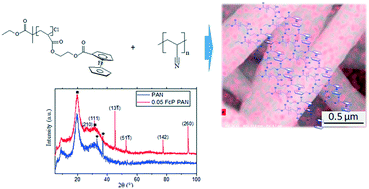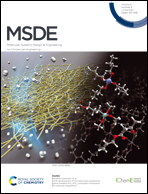Electrospun polyacrylonitrile/2-(acryloyloxy)ethyl ferrocenecarboxylate polymer blend nanofibers
Abstract
Ferrocene (Fc)-containing monomers were synthesized from ferrocene carboxylic acid and 2-hydroxyethyl acrylate as precursors, and the synthesized monomer was polymerized with ethyl 2-bromoisobutyrate by the atom transfer radical polymerization (ATRP) method. Polyacrylonitrile (PAN) precursor fibers and PAN-2-(acryloyloxy)ethyl ferrocenecarboxylate polymer (FcP) blend nanofibers were electrospun from the solution of N,N′-dimethylformamide and characterized by mechanical, spectroscopic, structural and electrochemical means. The results show that the blending of polymers with different FcP content leads to improvements in thermoelastic and electrical properties. Frequency-dependent thermomechanical characterization via dynamic mechanical analysis reveals pronounced changes in the glass transition, rubbery plateau, and onset of degradation, as well as in their storage and loss modulus values, in particular when small amounts of FcP are present. A typical double-peak structure of PAN and the characteristic FcP peaks confirm the blend structure. Comparing PAN nanofibers with PAN–FcP blend nanofibers, the increase in the amount of FcP results in an almost linear rise in contact angle and fiber diameter along with the glass transition of the polymers.



 Please wait while we load your content...
Please wait while we load your content...